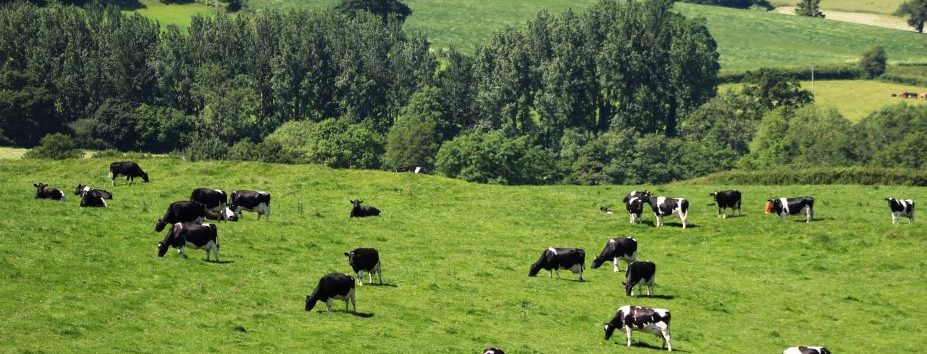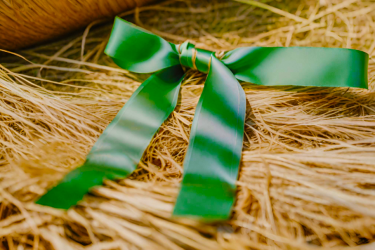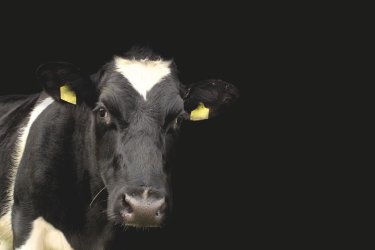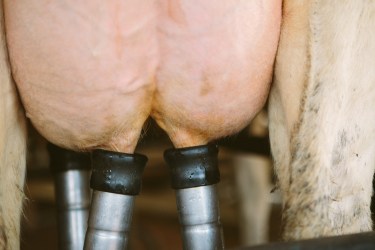By Emma Stuart
In recent weeks, many farms have reported seeing increased cases of cows displaying signs of “pica”, that is, eating or licking stones, concrete, plastic, or anything else which would ordinarily be deemed inedible. It must be remembered that it is not a normal behaviour and it clearly indicates that there is an underlying health problem.
But what causes pica and why is this happening?
In general, there are thought to be two main reasons why cows suddenly start showing this behaviour – mineral deficiencies and inadequate fibre – but energy or protein imbalances and parasites can also be involved.
Mineral deficiencies
Phosphorus and sodium (salt) deficiencies are the two most common causes of pica, although it has been shown that zinc, iron, cobalt, magnesium, copper and selenium levels are also low in these cows.
Rapidly growing grass is naturally low in sodium and phosphorus, but the extraordinarily wet and mild winter may have caused nutrients to be leached away from the soil, leaving the grass deficient. It should also be noted that fertiliser and slurry can contain high levels of potassium, which may cause sodium to become “locked up” and unavailable for use by the animal.
Soil or grass sampling for mineral analyses can help indicate if mineral deficiencies are a problem. Additionally, cows can be blood sampled to check mineral status, thus it is important to consult your vet to aid the diagnosis and discuss options that are appropriate to your enterprise.
As sodium is the only mineral that can be voluntarily regulated by cows, salt licks are a useful method of preventing this deficiency. However, it must be remembered that individual intakes will vary significantly and once their desire for salt is satisfied, they will not continue to use the lick. Therefore, they may not meet the requirements for other minerals such as phosphorus. Salt licks are relatively cheap and freely available, so they are a good place to start. If there is no improvement after 1-2 weeks, it is worth exploring other reasons for this behaviour.
Although other minerals such as copper, selenium, cobalt and magnesium can be supplied in drenches, injections or boluses, both phosphorus and sodium must be given free-choice as blocks, licks or as loose minerals. However, as mentioned above, cows cannot regulate their intakes to meet their phosphorus requirements, so this mineral must be “hidden” within a palatable lick such as cereal-based molasses or in the water supply. In practice, if a deficiency is suspected, you could supply Himalayan rock salt with a separate phosphorus lick or block within easy access of cows at grass. Despite this, it is always useful to get a definitive diagnosis as excess phosphorus supplementation in the diet can have detrimental environmental effects.
Additionally, as some minerals are present in the drinking supply, it is important that cows have unlimited access to clean, fresh water, particularly after milking.
Inadequate fibre
Grass is typically very low in physically effective fibre compared to hay, straw and grass silage, particularly when it is growing well in the spring and summer. This reduces cudding activity and saliva production, which are important for buffering rumen acids. This can result in acidosis which impacts rumen health and affects the efficiency of rumen microbes. Signs of acidosis include very loose, bubbly dung and low butterfat production. Due to poorer absorption of nutrients as feed passes more rapidly through the system and inefficient microbial digestion of fibre particles, these cattle may become energy, protein or mineral-deficient, predisposing to pica.
Supplementing the diet with a high-fibre forage such as straw, hay, haylage or silage with a high NDF can improve signs of pica in these cows. In some instances, switching from an 18% high-starch parlour cake to a 16% high-fibre cake may help.
Inadequate energy
High-yielding dairy cows in early lactation can come under considerable stress as it is physically impossible for them to consume sufficient energy in the diet to meet their demands for producing milk, hence the term “milking off their back”. This can cause ketosis which is often associated with behavioural changes and can manifest as pica in the form of licking concrete walls and floors.
Identifying and treating ketotic cows early, altering the diet to increase the energy density and good dry cow management can help alleviate this problem.
Parasites
A less common problem in adult cows but of significance to younger animals are gastrointestinal parasites such as worms. These can affect nutrient absorption and may lead to pica. Similarly, high fluke burdens in certain areas of the country can predispose to this problem, although this is less common.
Discussion with your vet and implementation of an appropriate parasite control plan is important for avoiding such problems.
In summary, pica can be caused by several different factors, but at grass, mineral and fibre deficiencies are most often the culprit. Deficiencies can be identified through grass or soil analyses and blood sampling affected cows. Supplementing the diet with licks, blocks or loose minerals, or using boluses, injections or drenches in consultation with your vet can help alleviate problems. Fibre deficiencies can be corrected through supplementing the diet with high-fibre forage. Other reasons for pica include inadequate dietary energy and gastrointestinal parasitism, although these are less common.







